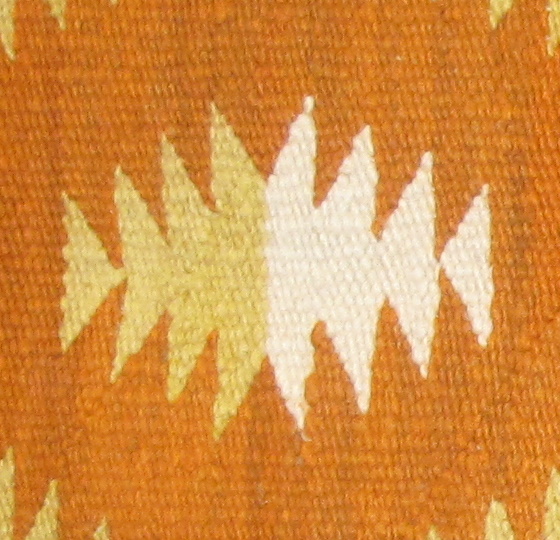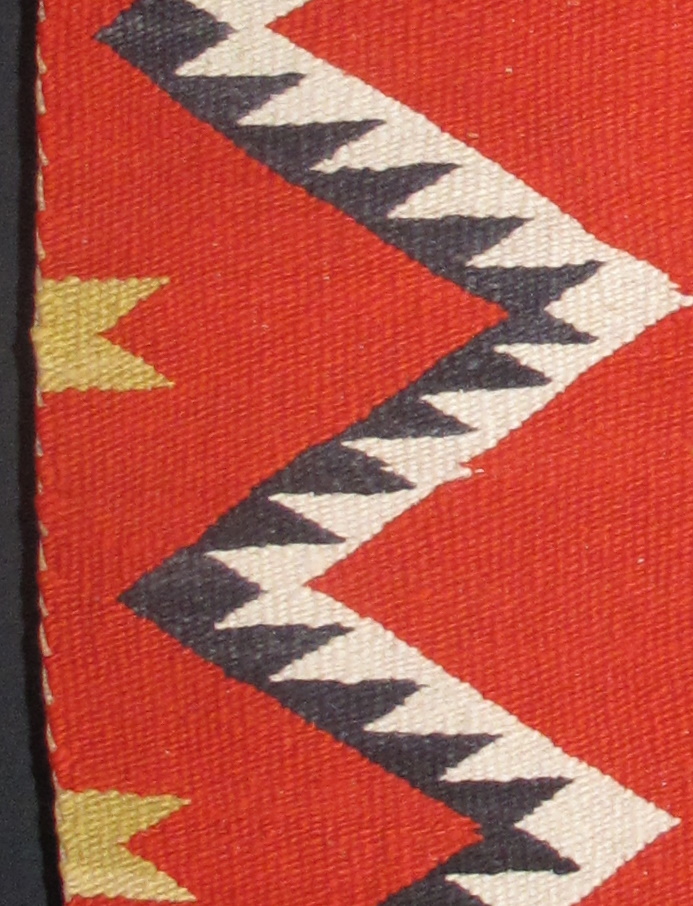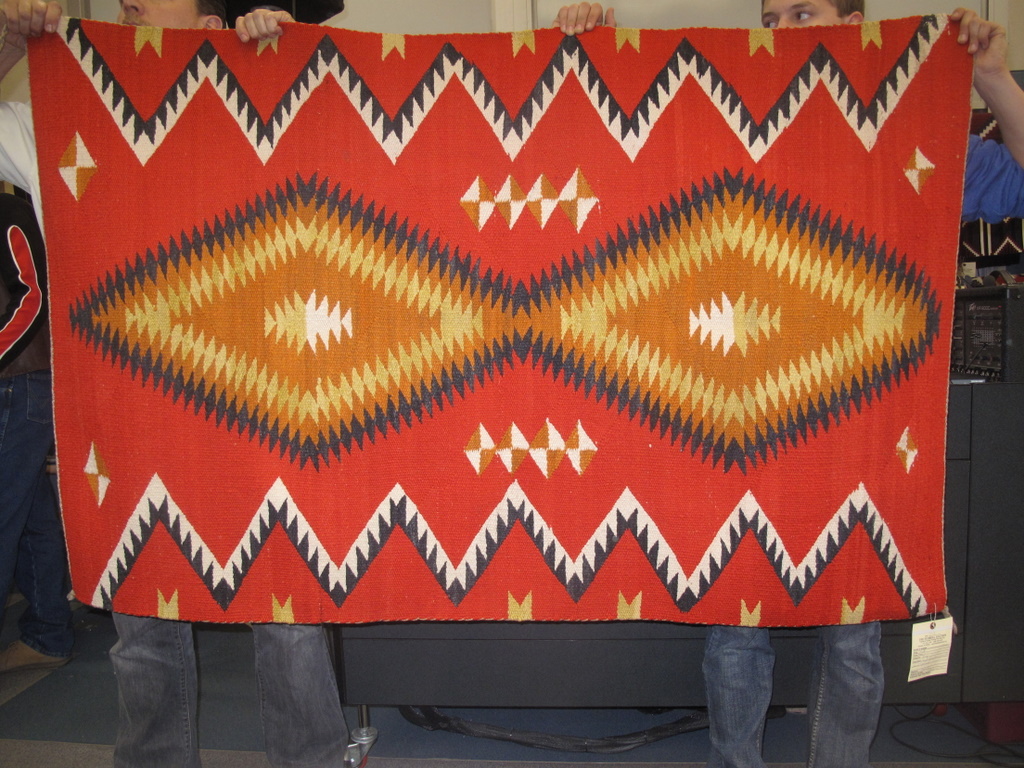A Thread from the Past: A Transitional Rug
Tempe, AZ It is always fascinating to see the rugs that people have tucked away. Most of the time, these textiles have been well loved to the point where some of them are in tatters, but every once in a while something emerges that gives you a window to another day, this one over 100 years ago. The rug in the picture above had been stored away since shortly after it was woven. Why would someone do that? Who knows? Sometimes, things like this come from families who have been in the trading business. Over the course of a trading career, they’ll amass that I like to call a Trader 401k that usually consists of many of the higher quality items that they’ve acquired, although that isn’t always the strategy. “If it was in the store for two or three years and it didn’t sell, I just took it in the house”, said one trader who had built up a wonderfully eclectic treasure trove from the things that her customers didn’t want. For whatever reason, the rug above was stored away for somewhere around 100 years and it provides us with a glimpse at Navajo weaving right at the beginning of the rug weaving period.
Always looking for ways to market the goods that the Navajo people traded to them, entrepreneurs like J.B. Moore, C.N. Cotton and J.L Hubbell looked at style trends and passed those along to the artists and craftspeople that they worked with. For instance, during the 1890’s, it was quite fashionable for upper class Victorian homes to have an “Indian Room”. Now, what could be better than a Navajo rug to cover the floor in your Indian Room? Navajos didn’t weave rugs at the time, but the weavers astutely caught on to what the traders wanted and started to adapt their blanket patterns to a more tightly packed weave done with thicker yarns that would stand the wear of foot traffic.
This rug is very much part of this inflection point in Navajo weaving. In terms of pattern, it could be a Germantown wearing blanket from the 1870’s or 1880’s, but the yarns are thick and tightly hand spun from local sheep and the dyes used for the central double diamonds are vegetal sage and wild carrot. As the Navajo rug gained popularity, the designs would evolve into complex bordered geometries, but at this point the weavers were using the patterns that they knew to create a product that they would only see used in the homes of others. As weavers turned to the production of rugs, commercially woven blankets that echoed the old Transitional patterns were introduced and blanket weaving ended. Today, there are a few weavers who are once again picking up the idea of weaving items for personal use and apparel and a rug dress has become one of the most desired items for graduations. Maybe we’re on the edge of another trend!
If you are in the Phoenix area and would like to see more historic textiles, stop by the River Trading Post in Scottsdale between now and February 29th to see their Antique Weaving Show. Click here for more details. I’ll be stopping by there and I’ll post some pictures for you.
 |
 |
| Hover your mouse over the pictures for a closer view | |
Hagoshíí (so long for now
Mary Walker
I am trying out a Facebook based comments system. Please let me know if you like it. Or not.

